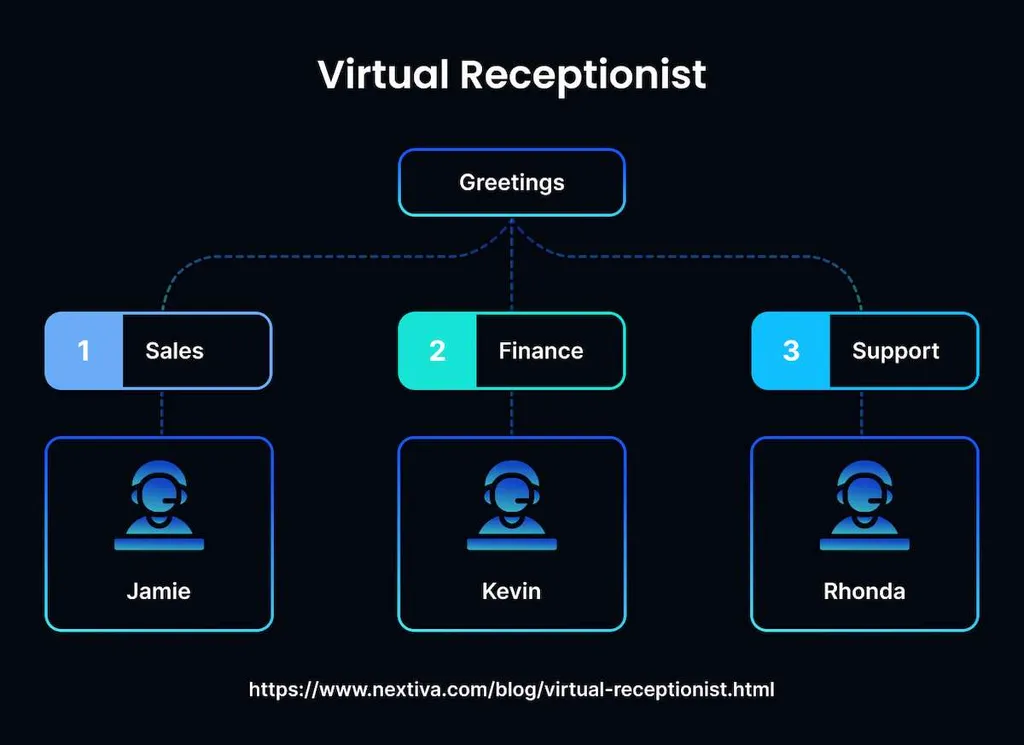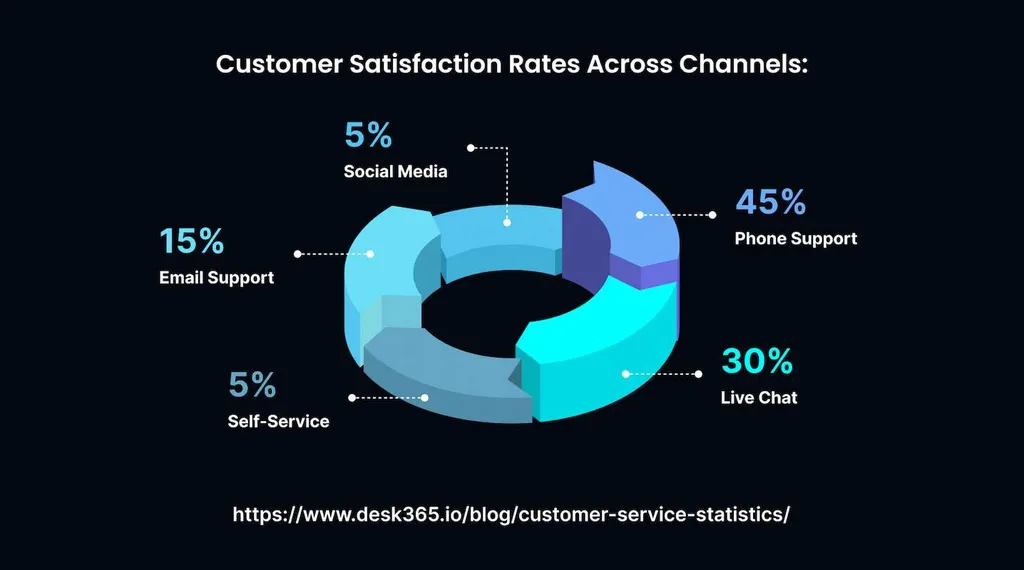Firms often face situations where potential clients call after hours. There are two scenarios. They can be sent to voicemail, and as a result, the clients will be lost, or they can be greeted by a virtual assistant that answers their questions, schedules a consultation, and leaves a lasting impression. The client ends the call feeling satisfied. And the firm? It’s already building trust before the first handshake. A recent survey shows that 75% of customers judge a company’s credibility based on their initial interaction, and virtual receptionists help businesses make a positive, professional impression that encourages further interaction. In this blog post, we’ll explain what is a virtual receptionist, how it works, and when it makes sense to use one.
What Is a Virtual Receptionist?
It is a remote answering service that handles tasks typically performed by an in-house receptionist. These responsibilities often include:
- Answering and routing incoming calls;
- Arranging appointments;
- Responding to basic customer service queries;
- Providing detailed information about a company’s services or products.
The rise of AI-powered virtual receptionists is changing the game. They use advanced NLP algorithms to make conversations relevant, accurate, and available 24/7. Such voice-based tools can respond instantly, learn from repeated queries, and integrate with calendars, CRMs, and booking tools.
How Does a Virtual Receptionist Work?
Auto attendants typically rely on cloud-based communication technologies, which allow them to answer calls, respond to messages, or schedule appointments from anywhere. In essence, all incoming calls are forwarded to the digital service automatically or depending on set business hours. Every client will reach the business.

Here is a simple explanation of the inner mechanics: When a call comes in, the system, using interactive voice response (IVR), follows pre-defined scripts and workflows tailored to your needs. This might involve:
- Greeting the caller with a branded introduction;
- Answering FAQs;
- Routing the call to the right department or team member.
For appointment-oriented industries, you can find solutions with integrated booking systems to set, reschedule, or confirm meetings in real time.
Some solutions include multilingual support, lead intake, or call screening. For businesses using AI receptionists, natural language processing enables the system to understand and respond to basic inquiries without human intervention. In more complex cases, the call is escalated to a human agent or forwarded to your internal team.
Strategic Upsides of Using a Virtual Receptionist
One of the most attractive benefits of AI-driven virtual receptionists is cost efficiency. Instead of hiring a full-time employee or signing a contract with a call center, firms profit from professional reception staff assistance without paying salaries, benefits, or office overhead. This brings significant savings, especially for those who operate on limited budgets.
Another upside is 24/7 availability. Digital helpers are available anytime and guarantee that your business is reachable at any moment. Whether a client calls after hours or from a different time zone, every call is answered.

Another major benefit is scalability. As your call volume grows, your virtual receptionist service can scale with you without the hassle of recruiting or training new staff. This means you’re always equipped to handle customer inquiries, regardless of business fluctuations.
Finally, auto attendants enhance your professional image. Whether you’re a self-entrepreneur or a growing startup, having a receptionist who handles calls professionally and consistently helps convey reliability and build trust with potential clients.
When to Consider a Virtual Receptionist
Implementing a virtual receptionist becomes a strategic decision when customer communication drains internal resources. If your business is missing calls, experiencing long response times, or lacking consistent after-hours coverage, a virtual receptionist can help maintain service quality without the overhead of additional hires. This solution is particularly valuable for firms that focus on expansion, enter new markets, or optimize operational efficiency. By delegating answering calls and scheduling appointments to AI-based tools, the firm can reallocate internal staff to higher-value tasks, improve productivity, enhance the customer experience, and preserve brand reputation.
Live vs AI-Powered Receptionists
Let’s take a closer look at what is a virtual receptionist, and explore how it differs from traditional front desk staff. Let’s compare them in detail to understand which one to choose for your business.
| Feature | Live Employees | AI-Powered Receptionists |
| Type | Human professionals | Automated instruments based on NLP (natural language processing) |
| Strengths | Handle complex inquiries, show empathy, adjust tone in real-time | Manage high call volumes, automate routine tasks, provide instant responses |
| Best For | Service-based businesses where a personal touch is needed | Firms looking for efficiency and 24/7 availability |
| Tasks Handled | Personalized support, nuanced conversations, customer care | Appointment booking, FAQs, call routing |
| Limitations | Limited availability, higher cost | Lack of emotional intelligence, may struggle with complex issues |
| Costs | Usually higher due to hourly rates or staffing fees | More cost-effective with predictable pricing models |
Many companies opt for a hybrid model using AI for basic functions and human agents for more involved interactions. However, the choice depends on your needs, scale and budget.
Best Practices for Using a Virtual Receptionist
Once you understand what is a virtual receptionist, applying best practices is key to maximizing its impact:
- To get the most out of your answering service, start with clear call-handling procedures. Provide detailed scripts or FAQs so the system knows how to respond to different scenarios and when to escalate issues to your team.
- Connecting your receptionist service with your CRM or scheduling software can significantly improve efficiency. This allows the receptionist to access up-to-date information and minimizes the possibility of human typos or missed appointments.
- Set realistic expectations. Not all services can answer complex technical questions, so clarify their responsibilities and empower them with the right resources. Regularly review performance by checking call logs, listening to call recordings, and gathering customer feedback to fine-tune your approach.
Personalize the tool’s voice and ensure it reflects your brand, whether it’s a warm and casual tone or a formal professional style. Customizing the assistant ensures uniformity across all customer touchpoints.
Bottom Line
A virtual receptionist offers more than convenience. It delivers measurable value to businesses aiming to streamline communication and improve customer service. AI-driven receptionists play a key role in operational efficiency by reducing overhead, expanding availability, and scaling alongside your growth.
With the right fine-tuning, business phone systems answer calls and represent your brand. Prioritize alignment, clarity, and regular efficiency evaluation to ensure your service provides the professional edge your business deserves.
While virtual receptionists focus services on phone-based support, AI-powered platforms like MetaDialog bring these benefits into the digital space. We enable businesses to offer instant and intelligent responses through chatbot technology, manage high volumes of inquiries, and maintain 24/7 engagement without compromising quality. After fine-tuning, our customer support solution becomes a direct extension of your brand.
